A Method for Extracting Dynamic Vortex Acoustic Signal Characteristics in Island and Reef Channels Based on Time-Reversal Mirrors
Abstract
1. Introduction
2. Vortex Acoustic Signal Feature Extraction
2.1. Vortex Sound Signal and Characteristics
2.2. TRM Extracts Vortex Acoustic Signal Features
3. Experimental Verification
4. Feature Extraction of Dynamic Vortex Acoustic Signals
4.1. Unified Motion Vortex
- 1.
- Vortex position remains unchanged, while vortex radius diffuses.
- 2.
- Vortex position changes, while vortex radius remains unchanged.
- 3.
- Both vortex position and radius change.
4.2. Oscillating Motion Vortex
5. Conclusions
- (1)
- By comparing the results of vertical-axis vortex acoustic signal measurement experiments with numerical simulations, it is verified that TRM technology can linearly amplify the phase jump caused by the dynamic eddy current field to a certain extent.
- (2)
- The amplification effect of the acoustic signal phase and the effectiveness of phase characteristic extraction in dynamic vortex are influenced by different factors, including the vortex field’s movement speed, radius diffusion speed, and oscillatory movement amplitude. In the case that the time reversal count N is less than 6, for vortex fields in uniform motion, TRM can effectively extract the phase characteristics of the acoustic signal when the vortex center moving speed is less than 2.2 × 10−3 m/s and the radius diffusion speed is less than 2.5 × 10−3 m/s, disregarding the impact of the dynamic vortex field on the extraction results.
- (3)
- For vortex fields in oscillating motion, in the case that the time reversal count N is less than 6, when the oscillation amplitude exceeds 0.15 m and the radius diffusion speed exceeds 2.4 × 10−3 m/s, the influence of the oscillating vortex field on the vortex acoustic signal extraction algorithm must be considered.
Author Contributions
Funding
Institutional Review Board Statement
Informed Consent Statement
Data Availability Statement
Conflicts of Interest
References
- Zhao, J.; Ding, Z.; Guo, W.; Qiu, J.; Wang, J.; Ma, Y. Small-scale vortex caused by the Damaigan reefs in Zhoushan. Mar. Forecast 2015, 32, 33–38. (In Chinese) [Google Scholar]
- Liu, F.; Liu, Y.; Tang, S.; Li, Q. Oceanic Kármán Vortex Streets in the Luzon Strait in the Lee of Didicas Island from Multiple Satellite Missions. Remote Sens. 2022, 14, 4136. [Google Scholar] [CrossRef]
- Yang, Q.; Nikurashin, M.; Sasaki, H.; Sun, H.; Tian, J. Dissipation of mesoscale eddies and its contribution to mixing in the northern South China Sea. Sci. Rep. 2019, 9, 556. [Google Scholar] [CrossRef]
- Iwatsu, R.; Tsuru, H. Numerical simulation of acoustic scattering from a circular vortex. Theor. Appl. Mech. Jpn. 2013, 61, 95–104. [Google Scholar]
- Manneville, S.; Prada, C.; Tanter, M.; Fink, M. Ultrasound Propagation through a Rotational Flow: Numerical Methods Com- 468 pared to Experiments. J. Comput. Acoust. 2001, 9, 841–852. [Google Scholar] [CrossRef]
- Yu, M.; Zhang, X.; Zhang, Y.; Wang, Z. Numerical Simulation of Vortex-acoustic Coupled Acoustic Signals Based on Ray Acoustics. In Proceedings of the 2021 OES China Ocean Acoustics, Harbin, China, 14–17 July 2021; pp. 335–339. [Google Scholar]
- Yu, M.; Yan, J.; Wang, Z.; Wang, X. Sound propagation characteristics of underwater steady-state vortex field. Acta Acust. 2023, 48, 1111–1118. (In Chinese) [Google Scholar]
- Yu, M.; Fan, D.; Zhang, Y.; Liu, H. Numerical simulation and experimental study of sound propagation in underwater steady vortex field. Tech. Acoust. 2023, 42, 419–425. (In Chinese) [Google Scholar]
- Li, J.; Ma, W.; Ma, Z.; Wang, L. Impacts of WRF Model Vertical Grid Resolution on Typhoon Numerical Simulation. Ocean Technol. 2013, 32, 76–81. (In Chinese) [Google Scholar]
- Siddique, M.F.; Ahmad, Z.; Ullah, N.; Ullah, S.; Kim, J.-M. Pipeline Leak Detection: A Comprehensive Deep Learning Model Using CWT Image Analysis and an Optimized DBN-GA-LSSVM Framework. Sensors 2024, 24, 4009. [Google Scholar] [CrossRef]
- Chaigneau, A.; Gizolme, A.; Grados, C. Mesoscale Eddies off Peru in Altimeter Records: Identification Algorithms and Eddy Spatio Temporal Patterns. Prog. Oceanogr. 2008, 79, 106–119. [Google Scholar] [CrossRef]
- Wang, G.; Su, J.; Chu, P.C. Mesoscale Eddies in the South China Sea Observed with Altimeter Data. Geophys. Res. Lett. 2003, 30, 2003GL018532. [Google Scholar] [CrossRef]
- Chen, X.; Chen, G.; Ge, L.; Huang, B.; Cao, C. Global Oceanic Eddy Identification: A Deep Learning Method From Argo Pro-files and Altimetry Data. Front. Mar. Sci. 2021, 8, 646926. [Google Scholar] [CrossRef]
- Chaigneau, A.; Le Texier, M.; Eldin, G.; Grados, C.; Pizarro, O. Vertical Structure of Mesoscale Eddies in the Eastern South 440 Pacific Ocean: A Composite Analysis from Altimetry and Argo Profiling Floats. J. Geophys. Res. 2011, 116, 2011JC007134. [Google Scholar] [CrossRef]
- Zhang, Z.; Wang, W.; Qiu, B. Oceanic Mass Transport by Mesoscale Eddies. Science 2014, 345, 322–324. [Google Scholar] [CrossRef] [PubMed]
- Mikryukov, A.V.; Popov, O.E. Penetration of Sound into the Cold Eddy of the Sargasso Sea. Acoust. Phys. 2008, 54, 65–70. [Google Scholar] [CrossRef]
- Ji, X.; Zhao, H. Three-Dimensional Sound Speed Inversion in South China Sea Using Ocean Acoustic Tomography Combined with Pressure Inverted Echo Sounders. In Proceedings of the Global Oceans of 2020, Singapore, 5–14 October 2020; pp. 1–6. [Google Scholar]
- Ji, X.; Cheng, L.; Zhao, H. Physics-Guided Reduced-Order Representation of Three-Dimensional Sound Speed Fields with Ocean Mesoscale Eddies. Remote Sens. 2022, 14, 5860. [Google Scholar] [CrossRef]
- Song, H.C.; Hodgkiss, W.S.; Kuperman, W.A.; Higley, W.J.; Raghukumar, K.; Akal, T.; Stevenson, M. Spatial diversity in passive time reversal communications. J. Acoust. Soc. Am. 2006, 120, 2067–2076. [Google Scholar] [CrossRef]
- Guan, R.; Fan, X.; Yang, W. Simulation of underwater target detection based on active time reversal. Ship Sci. Technol. 2020, 42, 135–139. (In Chinese) [Google Scholar]
- Stromkov, A.A. The use of the time reverse acoustics in a shallow sea. Hydroacoustics 2008, 11, 353–363. [Google Scholar]
- Roux, P.; de Rosny, J.; Tanter, M. The Aharonov-Bohm effect revisited by an acoustic time-reversal mirror. Phys. Rev. Lett. 1997, 79, 3170. [Google Scholar] [CrossRef]
- Manneville, S.; Maurel, A.; Roux, P.; Fink, M. Characterization of a Large Vortex Using Acoustic Time-Reversal Mirrors. Eur. Phys. J. B 1999, 9, 545–549. [Google Scholar] [CrossRef]
- Manneville, S.; Robres, J.H.; Maurel, A. Vortex dynamics investigation using an acoustic technique. Phys. Fluids 1999, 11, 3380–3389. [Google Scholar] [CrossRef]
- Yang, L.; Liang, B.; Li, X. Analysis of influencing factors of vertical axis vortex at the water inlet of hydraulic structures. China Water Transp. 2023, 23, 87–88+109. (In Chinese) [Google Scholar]
- Muhammad, F.S.; Zahoor, A.; Jong, M.K. Pipeline leak diagnosis based on leak-augmented scalograms and deep learning. Eng. Appl. Comput. Fluid Mech. 2023, 17, 2225577. [Google Scholar]
- Manneville, S.; Maurel, A.; Bottausci, F. Acoustic characterization of a stretched vortex in an infinite medium. In Proceedings of the Lectures of a Workshop, Rouen, France, 27–28 April 1999; pp. 231–240. [Google Scholar]
- Odgaard, A.J. Free-surface air core vortex. J. Hydraul. Eng. 1986, 112, 610–620. [Google Scholar] [CrossRef]



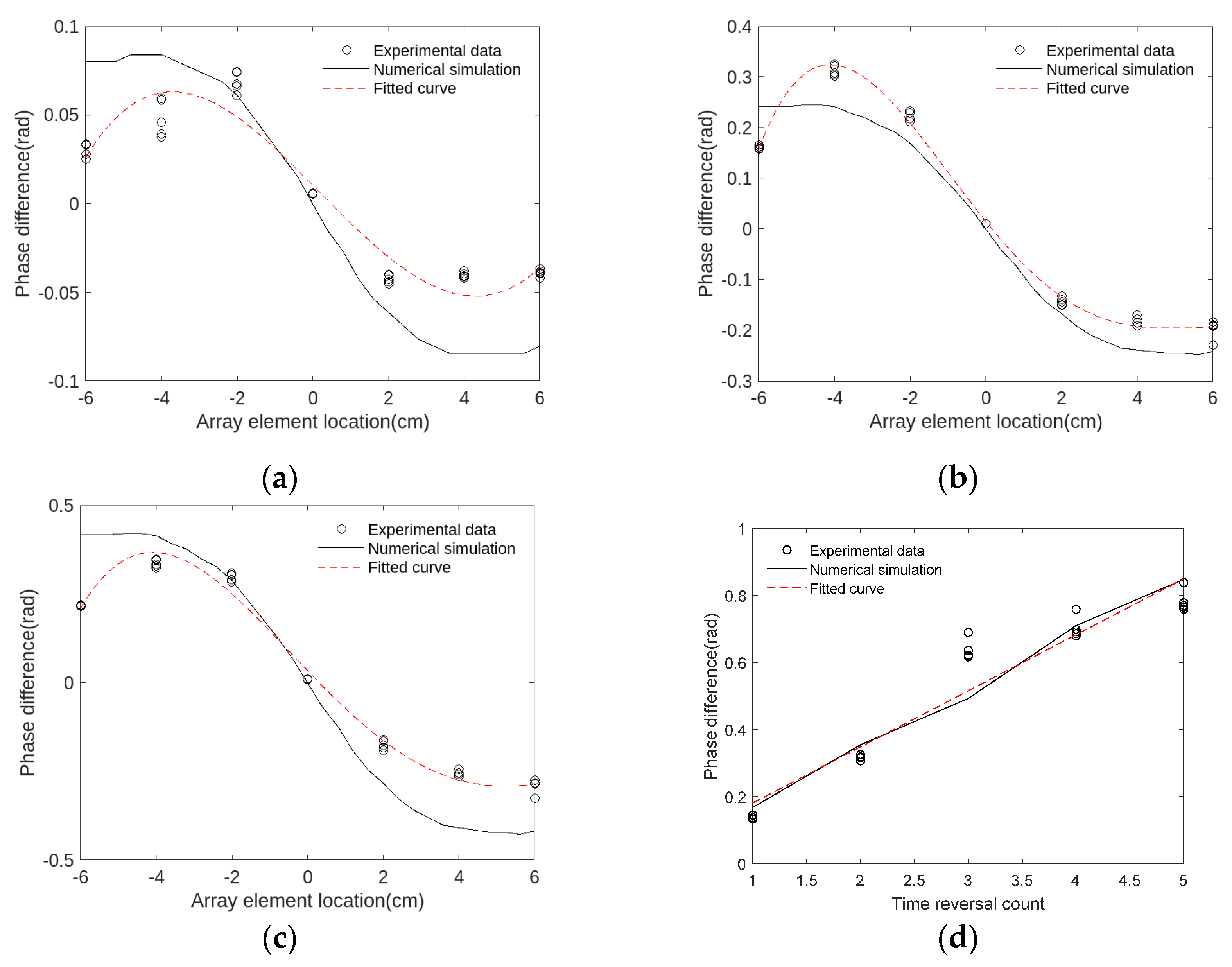
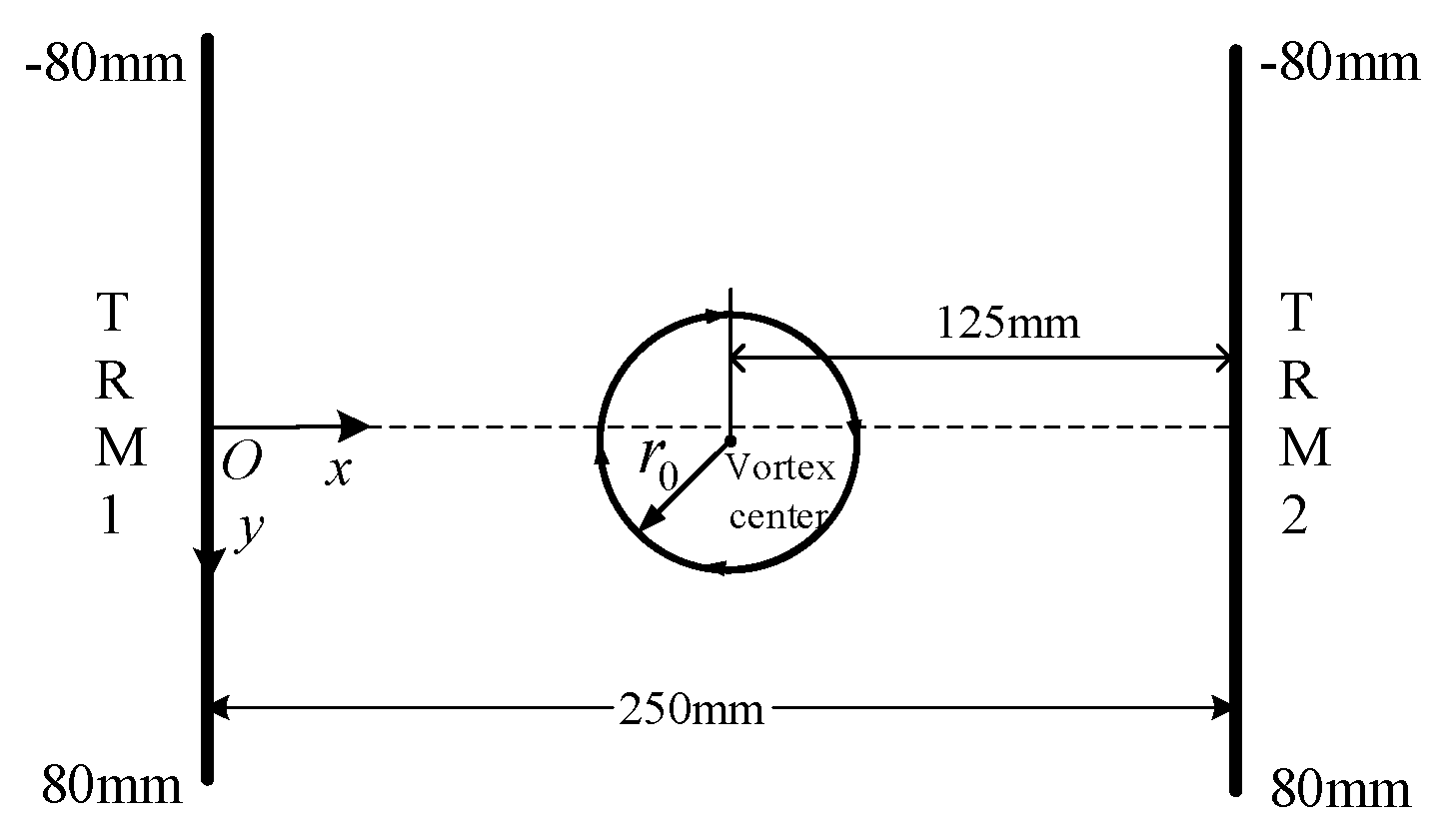
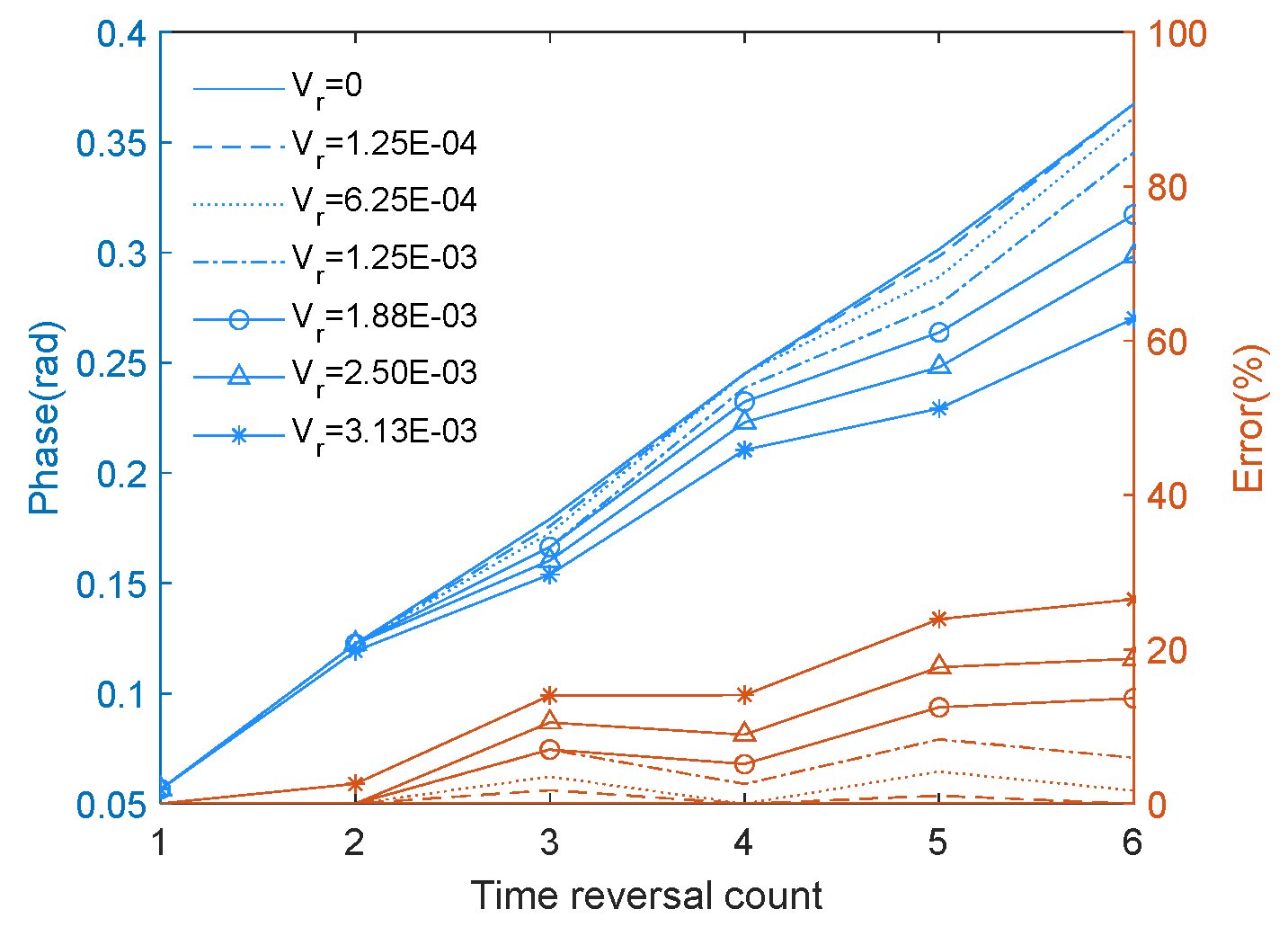
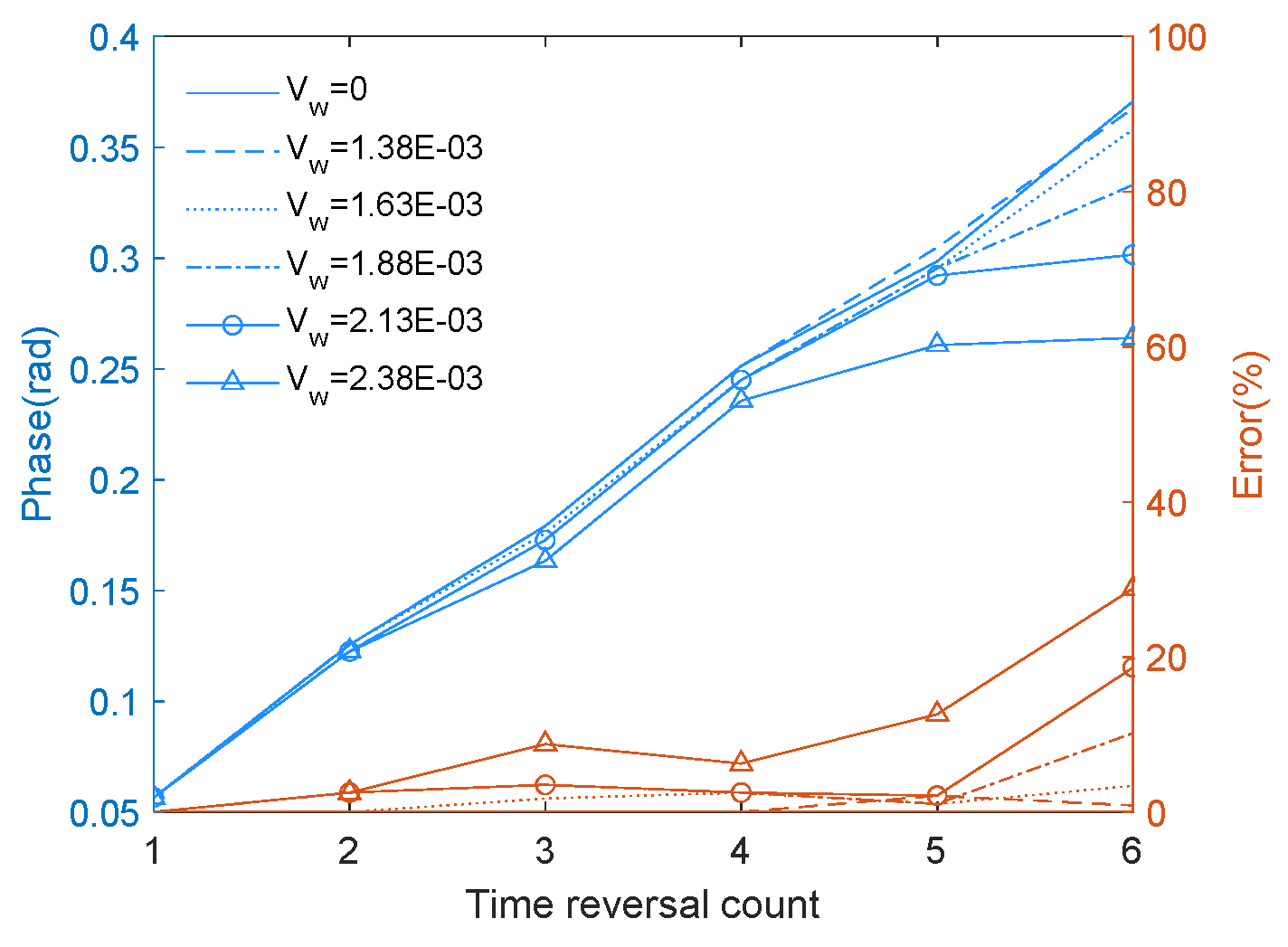

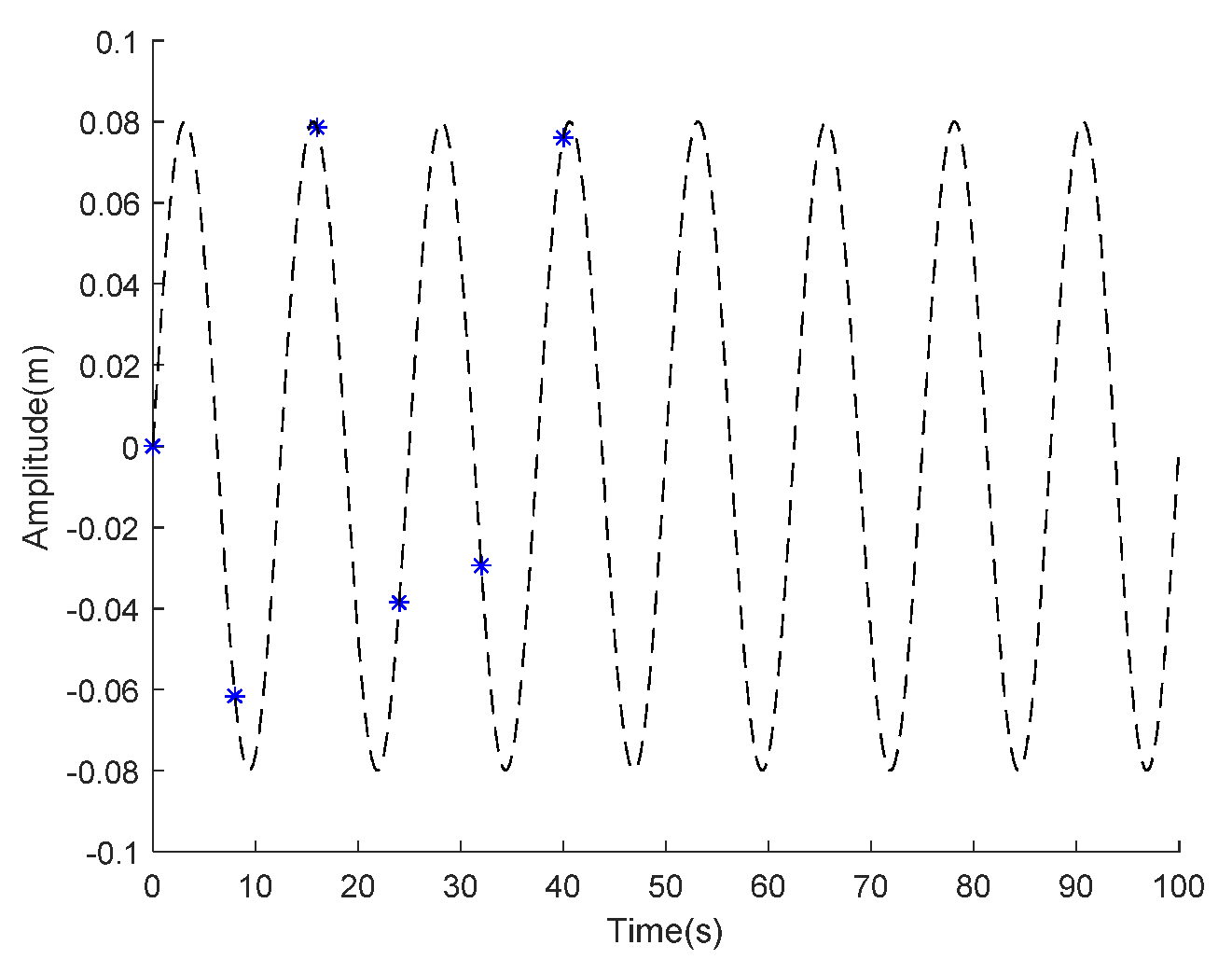
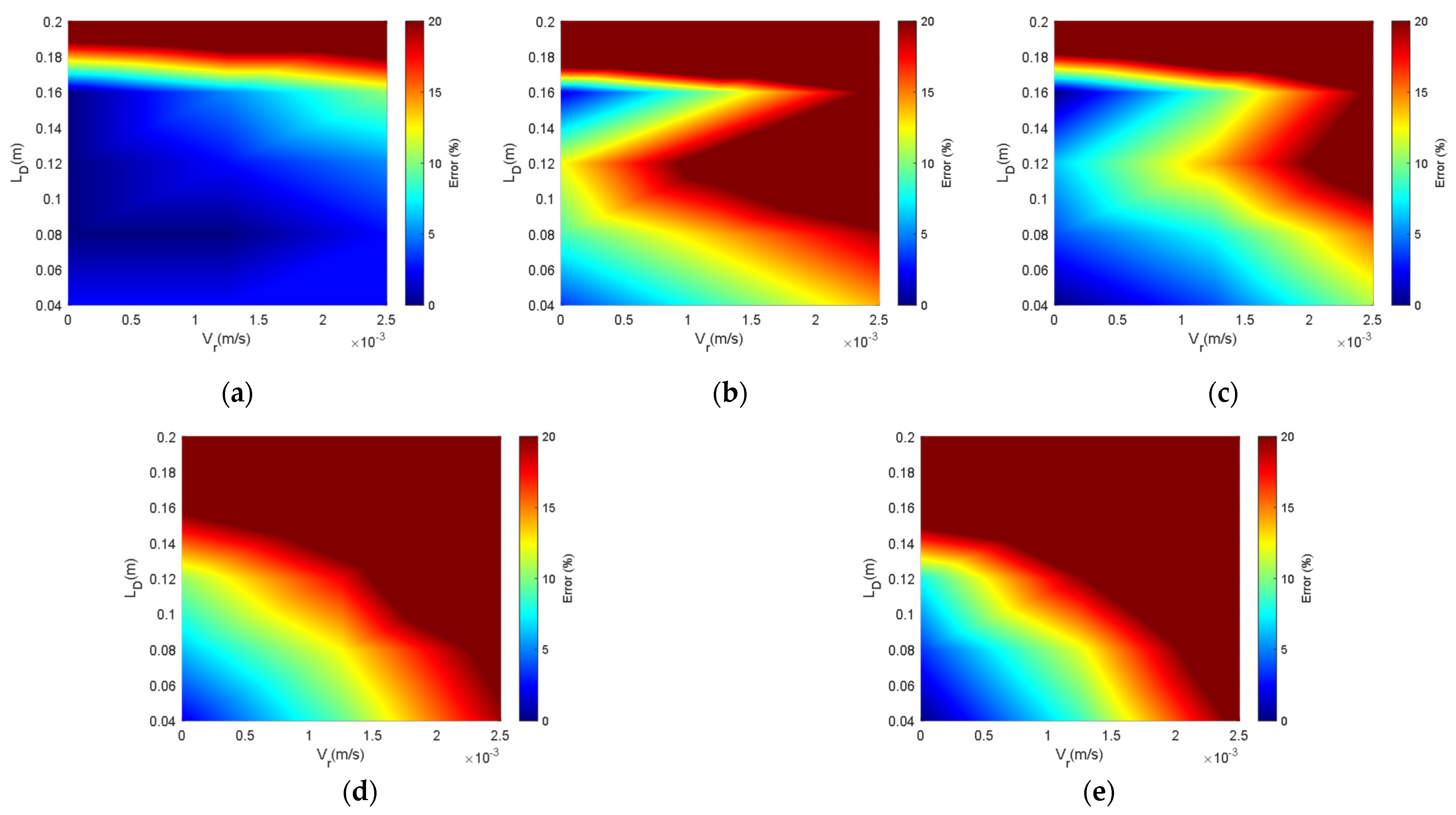
| Time Reversal Count | Numerical Simulation/rad | Experimental Fit/rad | Experimental Data/rad | Error between Experimental Fit and Numerical Simulation/% |
|---|---|---|---|---|
| 1 | 0.1682 | 0.1814 | 0.1395 | 7.85% |
| 2 | 0.355 | 0.3485 | 0.3168 | −1.83% |
| 3 | 0.5032 | 0.5156 | 0.6370 | 2.46% |
| 4 | 0.710 | 0.6827 | 0.7027 | −3.84% |
| 5 | 0.8482 | 0.8499 | 0.7821 | 0.19% |
Disclaimer/Publisher’s Note: The statements, opinions and data contained in all publications are solely those of the individual author(s) and contributor(s) and not of MDPI and/or the editor(s). MDPI and/or the editor(s) disclaim responsibility for any injury to people or property resulting from any ideas, methods, instructions or products referred to in the content. |
© 2024 by the authors. Licensee MDPI, Basel, Switzerland. This article is an open access article distributed under the terms and conditions of the Creative Commons Attribution (CC BY) license (https://creativecommons.org/licenses/by/4.0/).
Share and Cite
Yu, M.; Liu, H.; Zhou, W.; Fan, D. A Method for Extracting Dynamic Vortex Acoustic Signal Characteristics in Island and Reef Channels Based on Time-Reversal Mirrors. Appl. Sci. 2024, 14, 7042. https://doi.org/10.3390/app14167042
Yu M, Liu H, Zhou W, Fan D. A Method for Extracting Dynamic Vortex Acoustic Signal Characteristics in Island and Reef Channels Based on Time-Reversal Mirrors. Applied Sciences. 2024; 14(16):7042. https://doi.org/10.3390/app14167042
Chicago/Turabian StyleYu, Min, Hang Liu, Wei Zhou, and Dingfan Fan. 2024. "A Method for Extracting Dynamic Vortex Acoustic Signal Characteristics in Island and Reef Channels Based on Time-Reversal Mirrors" Applied Sciences 14, no. 16: 7042. https://doi.org/10.3390/app14167042
APA StyleYu, M., Liu, H., Zhou, W., & Fan, D. (2024). A Method for Extracting Dynamic Vortex Acoustic Signal Characteristics in Island and Reef Channels Based on Time-Reversal Mirrors. Applied Sciences, 14(16), 7042. https://doi.org/10.3390/app14167042






